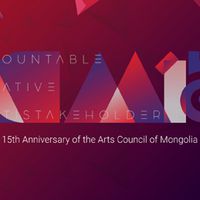New Website Collects Data of over 1000 Mongolian Temples

 January 2015 has seen the launch of a new website called Mongolian Temples. Mongolia's Buddhist heritage is revealed in a treasure trove of data presented in this website of the "Documentation of Mongolian Monasteries" project.
Today, as Mongolians are actively seeking to retrieve the past, striving to make contact with their historic cultural identity, the "Documentation of Mongolian Monasteries" website presents to the public a complex database of over 1,000 temples existing in Mongolia in the early part of the twentieth century along with a record of temples active in 2007.
The project is a collaboration between the Arts Council of Mongolia (ACM) and Mongolian and International researchers. The "Documentation of Mongolian Monasteries" website presents a globally accessible wealth of data on over 1,000 historic Buddhist temple sites, many of which today are no more than vague outlines on the steppe, as well as sharing the stories of hundreds of Mongolia's old people who knew the temples when they were young. It documents a rich cultural past and, promotes Mongolian cultural heritage internationally while encouraging young Mongolians to embrace their heritage.
In addition this rich and unique collection of data will provide Mongol scholars in and outside Mongolia with a starting point or adjunct to their study of Mongolia's Buddhist past. It can also serve as the basis for further study on the revival of monasteries in Mongolia after 1990.
A group of international researchers working in Mongolia in the field of Buddhist and cultural preservation collaborated with the ACM to conduct this project between 2005 and 2007. For ACM the project fitted its cultural heritage programme whose noble goal is protecting and conserving Mongolia’s cultural heritage for new generations.
The fieldwork was done in Ulaanbaatar and all of Mongolia's 21 aimags. The goal was to create a database of the location and condition of Buddhist temple and monastery sites in Mongolia at the beginning of 20th century that could be found in the main survey period of summer of 2007.
It was important to do the project then as elderly people who were disciples in the temples and monasteries up to 1938 were the people who could guide the surveyors to the sites. The opportunity was also taken to conduct oral history interviews with old people drawing on their reminiscences of the monasteries and their life at that time, and to survey the temples that were active in the country at the time of the survey.
From the time when Buddhism began to spread to and in Mongolia in the 16th century, temples and monasteries became important centres of culture in the country. For example: according to historical records for the 1920s, there were almost 1,000 temples in Mongolia. Since the 1990’s and the beginning of the democratic period, Mongolians have been trying to revive and protect their cultural heritage and traditions. In this context, some historians and researchers have been doing research on temples and monasteries that were the centres of knowledge and tradition, and, as such, inseparable from Mongolia’s national culture.
The website "Mongolian Temples" can be found at http://www.mongoliantemples.org/index.php/en/
January 2015 has seen the launch of a new website called Mongolian Temples. Mongolia's Buddhist heritage is revealed in a treasure trove of data presented in this website of the "Documentation of Mongolian Monasteries" project.
Today, as Mongolians are actively seeking to retrieve the past, striving to make contact with their historic cultural identity, the "Documentation of Mongolian Monasteries" website presents to the public a complex database of over 1,000 temples existing in Mongolia in the early part of the twentieth century along with a record of temples active in 2007.
The project is a collaboration between the Arts Council of Mongolia (ACM) and Mongolian and International researchers. The "Documentation of Mongolian Monasteries" website presents a globally accessible wealth of data on over 1,000 historic Buddhist temple sites, many of which today are no more than vague outlines on the steppe, as well as sharing the stories of hundreds of Mongolia's old people who knew the temples when they were young. It documents a rich cultural past and, promotes Mongolian cultural heritage internationally while encouraging young Mongolians to embrace their heritage.
In addition this rich and unique collection of data will provide Mongol scholars in and outside Mongolia with a starting point or adjunct to their study of Mongolia's Buddhist past. It can also serve as the basis for further study on the revival of monasteries in Mongolia after 1990.
A group of international researchers working in Mongolia in the field of Buddhist and cultural preservation collaborated with the ACM to conduct this project between 2005 and 2007. For ACM the project fitted its cultural heritage programme whose noble goal is protecting and conserving Mongolia’s cultural heritage for new generations.
The fieldwork was done in Ulaanbaatar and all of Mongolia's 21 aimags. The goal was to create a database of the location and condition of Buddhist temple and monastery sites in Mongolia at the beginning of 20th century that could be found in the main survey period of summer of 2007.
It was important to do the project then as elderly people who were disciples in the temples and monasteries up to 1938 were the people who could guide the surveyors to the sites. The opportunity was also taken to conduct oral history interviews with old people drawing on their reminiscences of the monasteries and their life at that time, and to survey the temples that were active in the country at the time of the survey.
From the time when Buddhism began to spread to and in Mongolia in the 16th century, temples and monasteries became important centres of culture in the country. For example: according to historical records for the 1920s, there were almost 1,000 temples in Mongolia. Since the 1990’s and the beginning of the democratic period, Mongolians have been trying to revive and protect their cultural heritage and traditions. In this context, some historians and researchers have been doing research on temples and monasteries that were the centres of knowledge and tradition, and, as such, inseparable from Mongolia’s national culture.
The website "Mongolian Temples" can be found at http://www.mongoliantemples.org/index.php/en/Similar content
posted on
01 Jun 2017
06 Aug 2014
posted on
05 Jul 2011
posted on
08 Sep 2010




